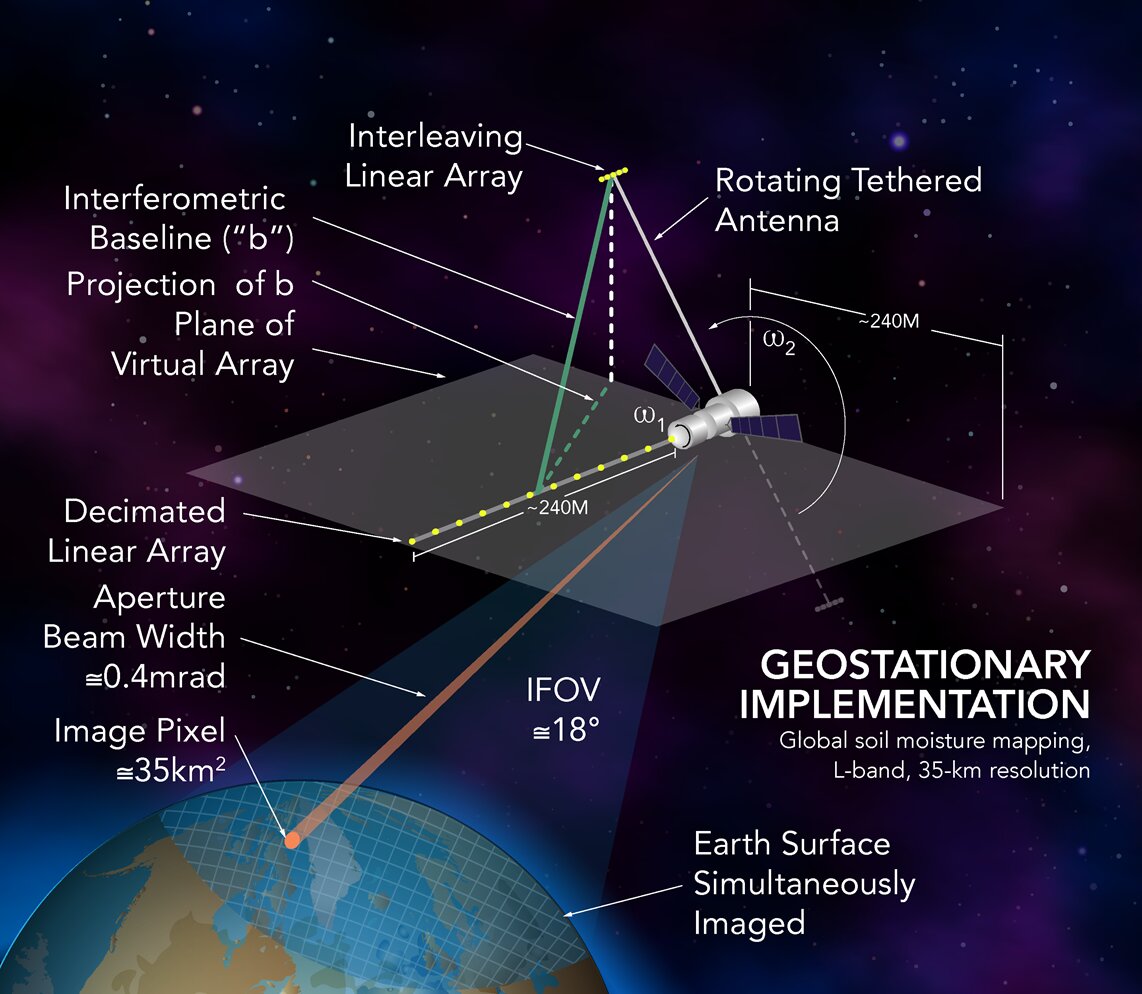John Kendra
Leidos, Inc.

R-MXAS is a revolutionary aerospace architecture for realizing a synthetic aperture imaging radiometer (SAIR) in a manner affording unprecedented sparsity in terms of number of antenna elements. As such, it enables a feasible path to space-based implementation of RF apertures of unprecedented size. The R-MXAS system is a single platform comprising a 1-D sparse antenna array on a rigid tether and one or more additional tethered antennas that rotate in a plane orthogonal to the 1-D array. The processing exploits the interferometric baselines formed between the rotating tethered antenna(s) at radius R and each of the antennas of the 1-D array on the rigid tether. A half-revolution of the rotating antenna(s) engenders a continuum of projected baselines into a horizontal plane which becomes the virtual 2D aperture. Applications of such large apertures, which may span 100’s of meters, include imaging applications such as persistent (GEO-based) RF earth imaging to benefit climate and weather modelling, or mapping of coronal mass ejections (CMEs) from a solar polar orbit to facilitate interplanetary voyages.
Key findings of the Phase I investigation include: 1) the pronounced out-of-plane baselines engendered by the R-MXAS system are in fact fully exploitable for excellent imaging performance, in terms of Point Spread Function; 2) a successful R-MXAS implementation could enable a synoptic GEO-based soil moisture and ocean salinity (SMOS) mission at L-band utilizing approximately 5X less antennas than would a GEO-based implementation of the leading state-of-the-art design, a Y-shaped sparse array. In addition, the completely unique manner in which all of the baselines created within the R-MXAS concept all involve the same (rotating) antenna opens the possibility of making that single antenna a high-gain phased array, thereby upending conventional tradeoffs of array sparsity for low sensitivity.
The Phase I R-MXAS investigation consisted exclusively of analysis and modelling and simulation to answer some very fundamental questions concerning the concept validity and feasibility. Those questions were convincingly answered in the affirmative. The Phase II work comprises two major tasks. Novel and sophisticated signal processing methods lie at the heart of the R-MXAS concept and the Phase II effort will refine those processing methods and investigate critical outstanding aspects. The second major task of the Phase II work plan is a comprehensive engineering analysis of the R-MXAS architecture. This analysis will focus on the key feasibility challenges to implementation and investigate technical solutions that can meet those challenges.




























